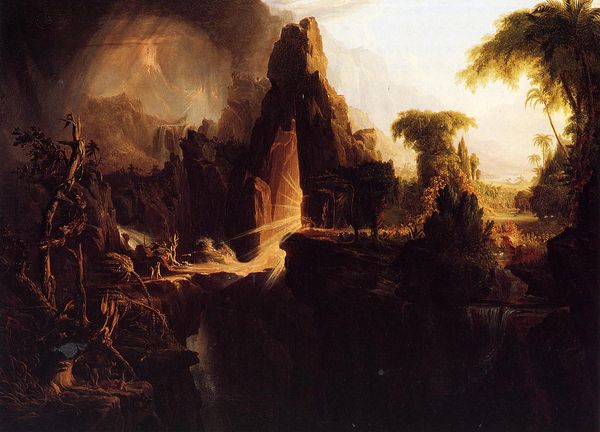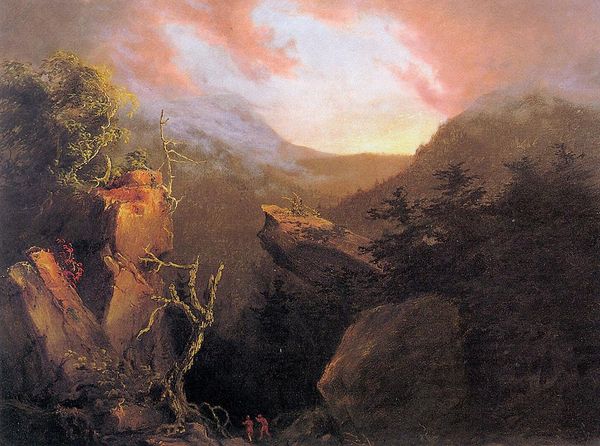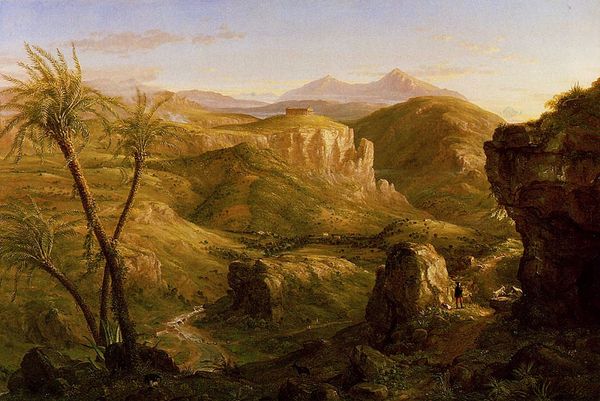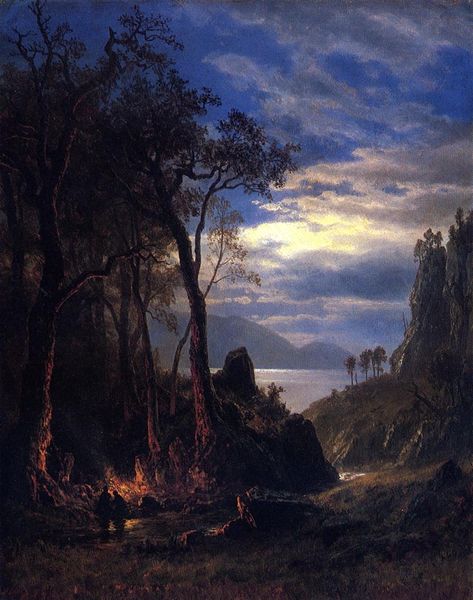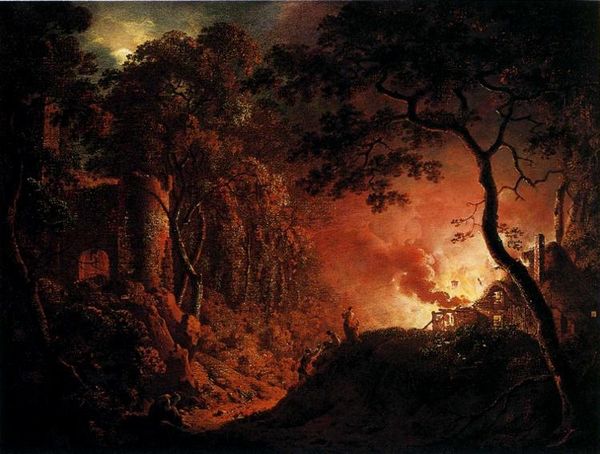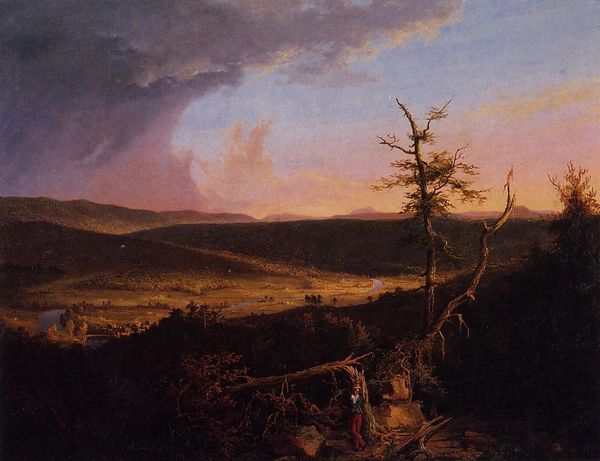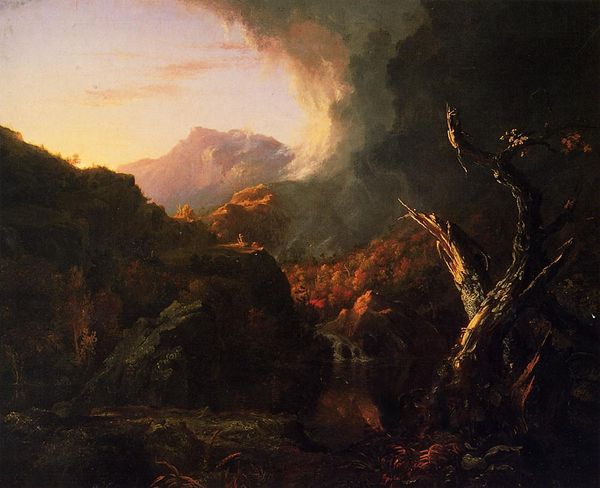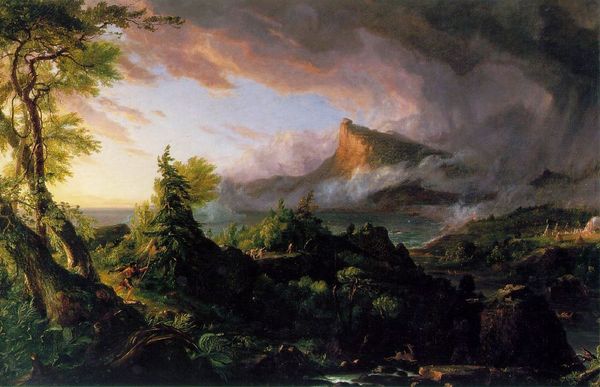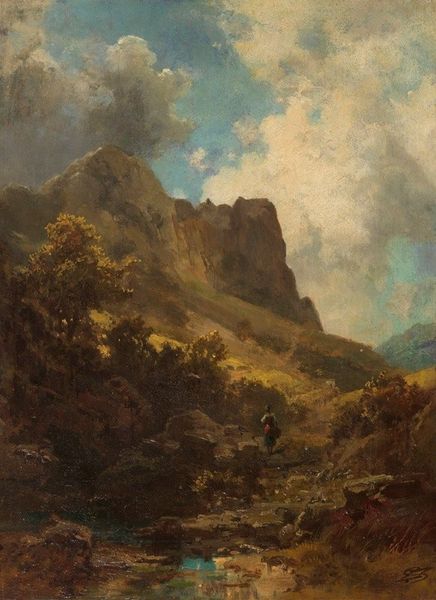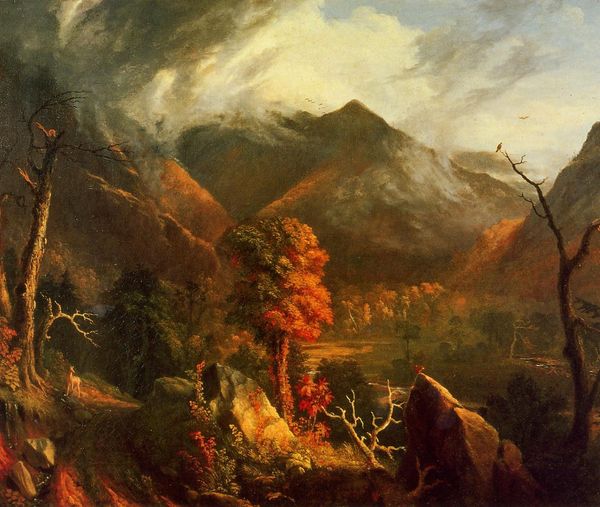
painting, oil-paint
#
fantasy art
#
painting
#
oil-paint
#
landscape
#
oil painting
#
romanticism
#
mountain
#
hudson-river-school
Dimensions: 91.2 x 122 cm
Copyright: Public domain
Curator: Immediately, the weight of those colossal geological forms asserts itself; the eye strains upward. Editor: This is Thomas Cole's "Indian Sacrifice," created in 1827. It is presently held at the University of Pennsylvania in Philadelphia. Cole, a luminary of the Hudson River School, renders this scene using oil paint. Curator: Yes, but these shapes resonate with ancient power, like primal deities rendered in stone. Their shadows cradle this ceremonial scene; the light feels almost stolen. The figures enacting what the title describes as sacrifice are placed, or rather pinned to the terrain—tiny actors on a monumental stage. Editor: Exactly. That's key to the painting's effect. Cole’s arrangement sets humanity against the immensity of nature—an intentional thematic element in Romanticism that explores themes of transcendence. Consider also the use of atmospheric perspective to render depth; he manipulates color and sharpness masterfully to push the mountains back into the distance. This contrasts sharply with the foreground’s distinct elements, emphasizing not only depth but also presence. Curator: And notice the deliberate composition! The jagged tree to the left mirrors the jutting crags to the right; visual rhyme reinforces narrative dichotomy. Then that white stag awaiting its destiny, that little human offering—what are those intended to evoke within the American imagination in 1827? Perhaps a more poignant inquiry of that cultural period reveals an attempt to establish visual ownership within the narrative of early expansion. Editor: Certainly, but Cole's technical handling also plays its part. Note the contrast of the brushstrokes here – almost photographic clarity on the figures contrasts against looser handling of foliage, and particularly, that ethereal mist drifting between the peaks. Curator: Ah, yes! That liminality between the physical and the spectral is where the symbolic weight truly resides. He isn't simply depicting a scene, but gesturing towards something in the landscape of our own shared mythology, that constant and often brutal dance between settlement and nature’s power. Editor: In conclusion, through formal techniques of scale and tonal arrangement, coupled with artful symbol and setting, we see a moment laden with cultural memory made vivid. Curator: It's a glimpse into how that past continues to inform, shadow, and perhaps even haunt our present visual vocabulary.
Comments
No comments
Be the first to comment and join the conversation on the ultimate creative platform.
